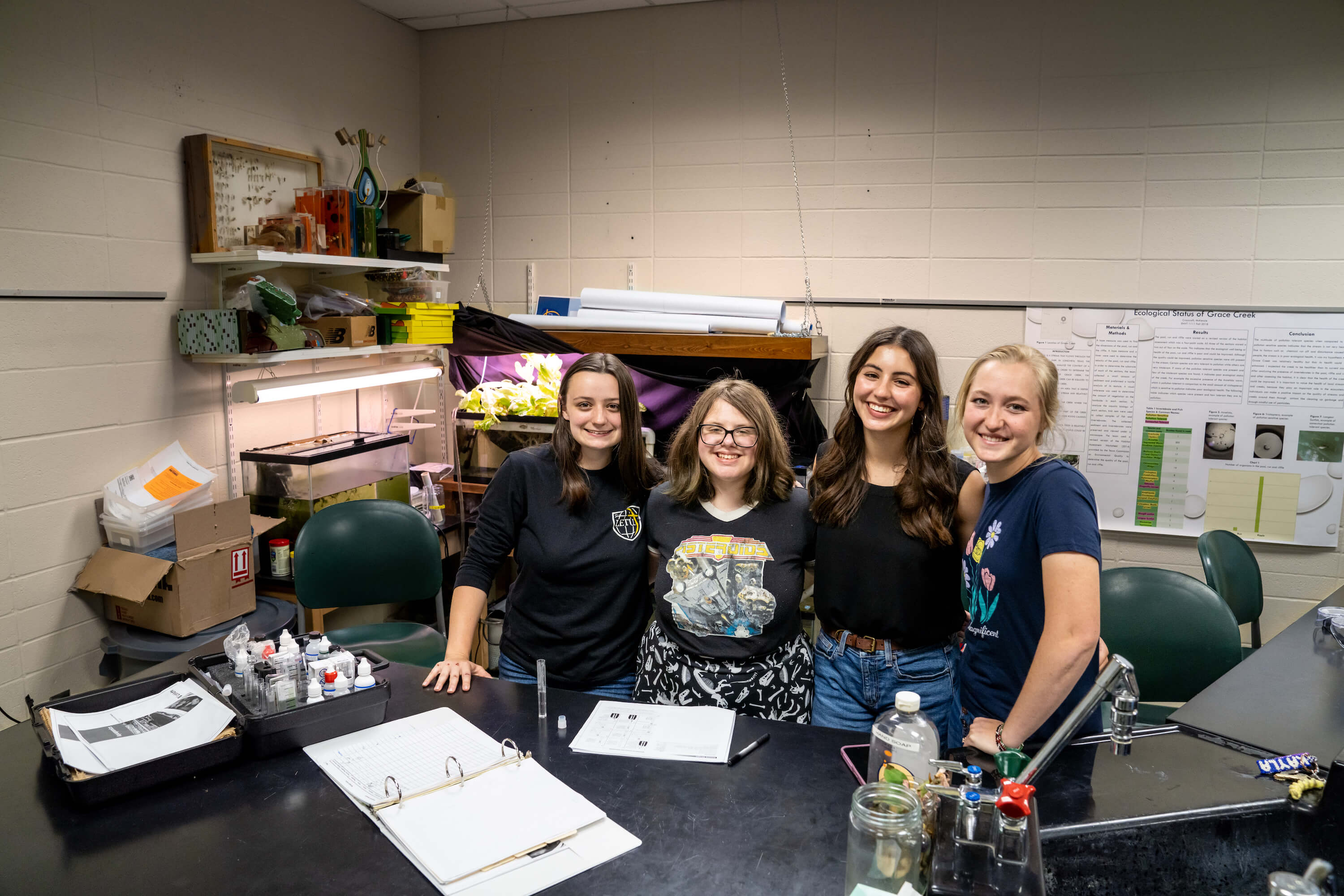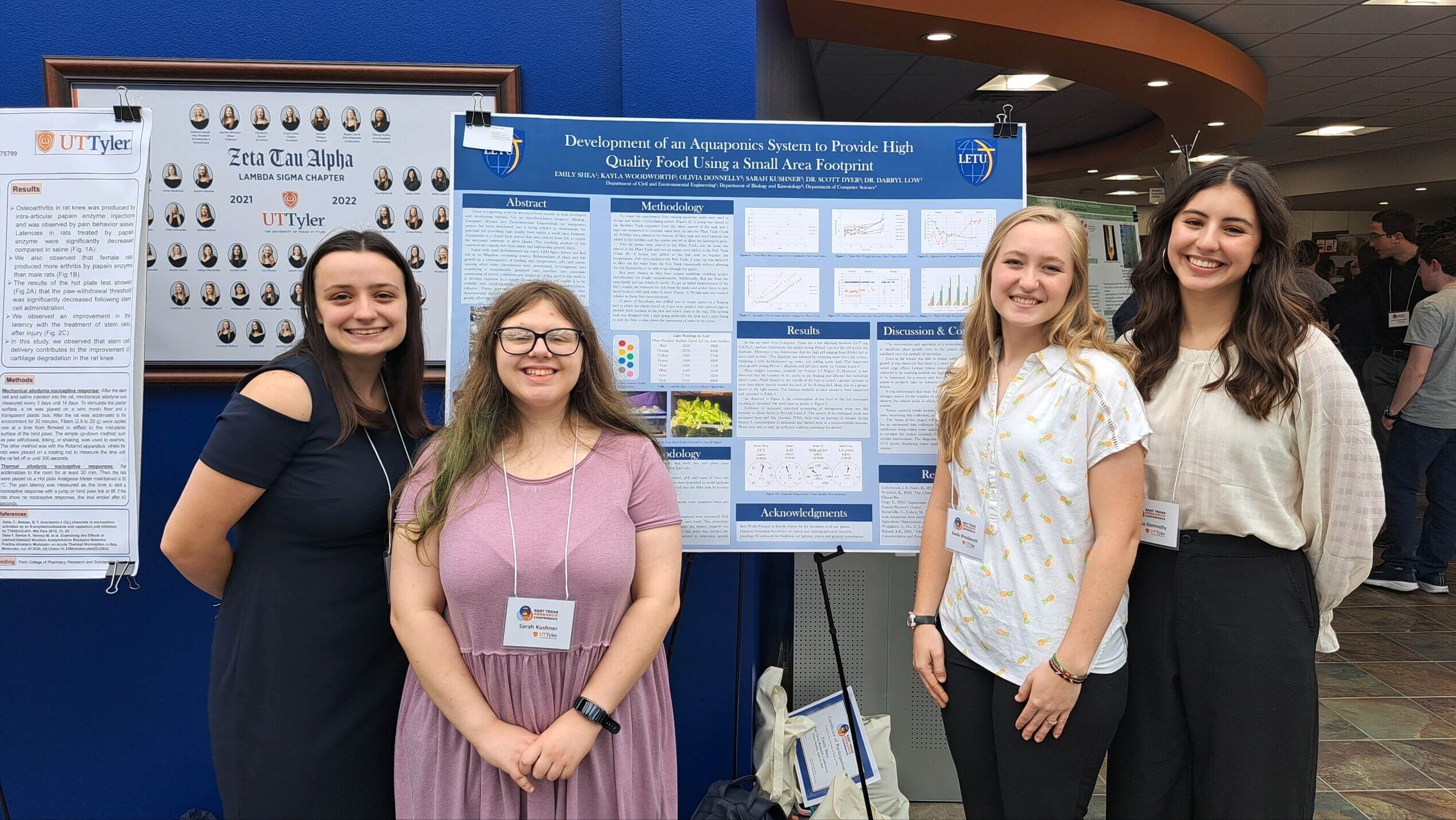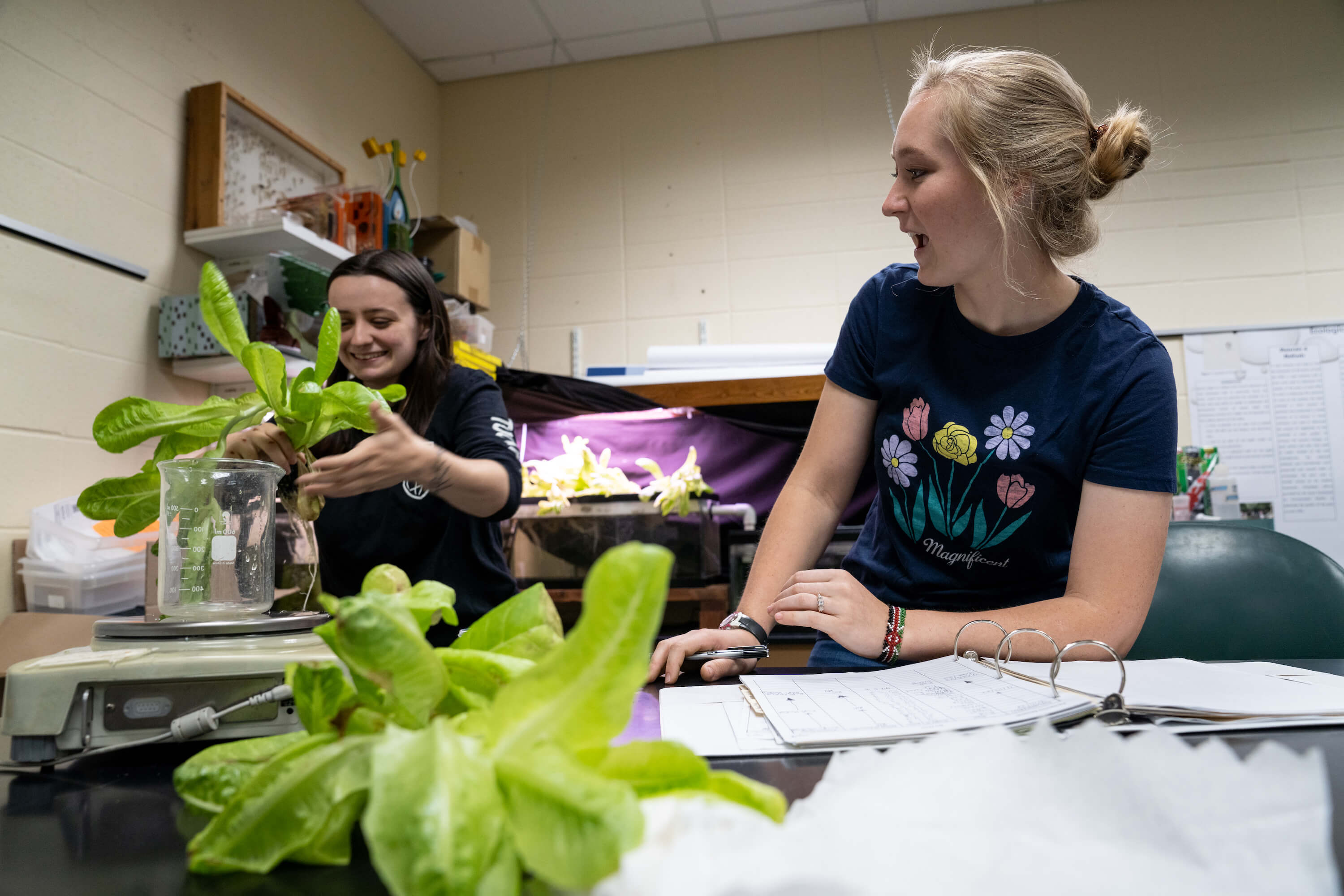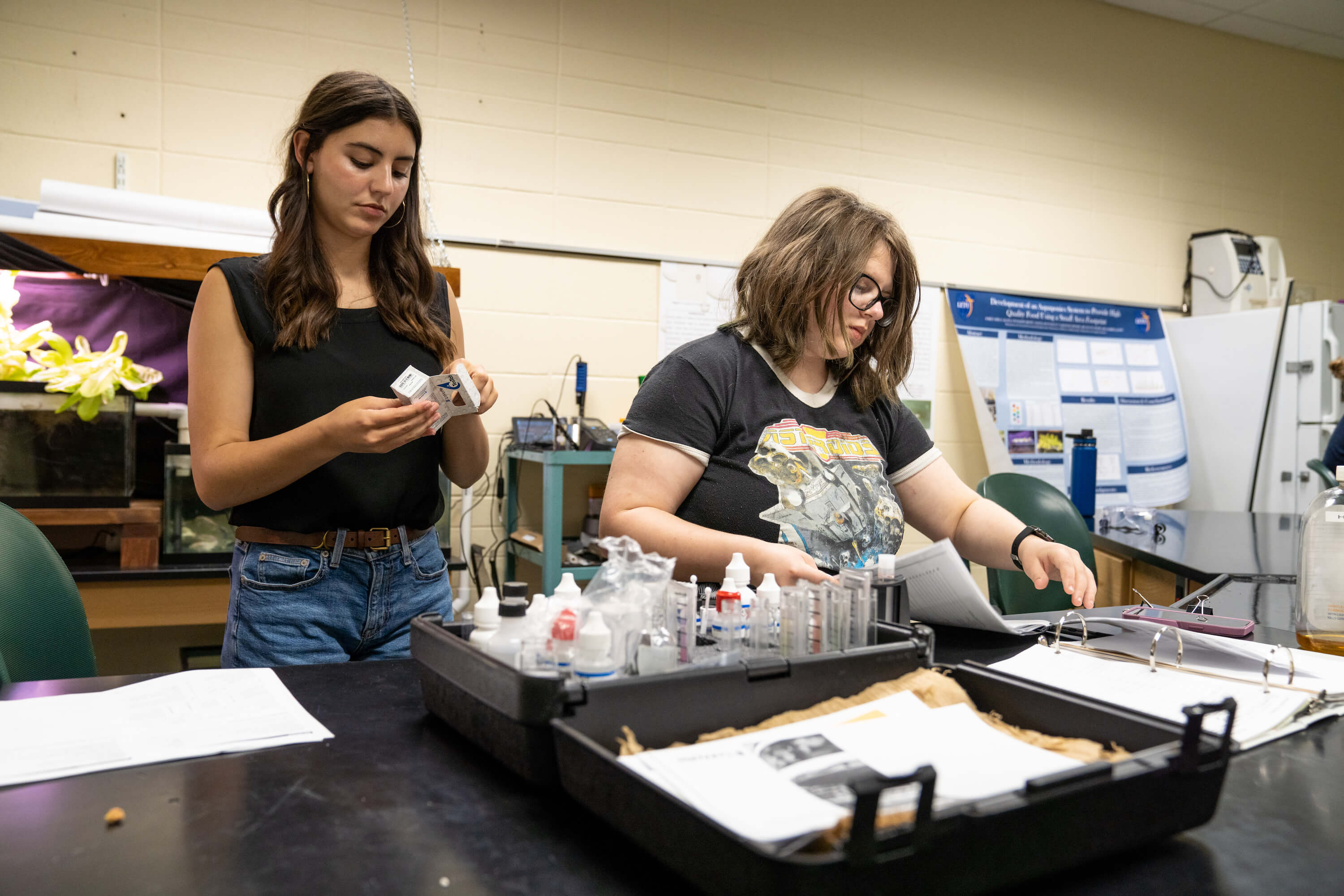
by Grant Bridgman
What does it take to make an impact in the world? Skill? Persistence? Answering this question can be difficult, as ‘impact’ can be a nebulous, subjective, moving-target kind of term—let alone how to make it happen. Despite this, it seems there are a few elements that remain time-tested and widely accepted, even if not always widely practiced, when it comes to what’s required to go from ‘zero-impact’ to ‘difference-making.’
Little things can lead to great impact.
Economist and philosopher Edmund Burke once said, “nobody made a greater mistake than he who did nothing because he could do only a little.”
This is partly the premise behind all scientific research. One small discovery can lead to another, and on and on, compounding into great leaps in scientific achievement, even if—especially—over long periods of time. If the initial ‘small discoveries’ were considered too insignificant to invest in, some larger mountains of problems would never have been moved.
For example, among the mountain-sized issues of the modern world, malnutrition looms large. Taking scientific research and applying it to specific communities, for specific outcomes, requires small steps. The good news? Making a positive impact can be as simple as taking one “little” step.
Great impact never happens independently.
It comes to life through relationships. This may be the most difficult type of impact to quantify while simultaneously being the most universally understood. Our interactions with other human beings have the power to transform. Our very search for purpose or meaning is rooted in the context of how our lives could be in relation to the lives around us. We were created to live with and learn from one another.
The greatest impact is iterative.
It’s a repeated process that points to something bigger. Its power lies in repetition, a continuous cycle of transformation and insight. It’s the life-giving ideas that become alive in and of themselves that build upon one another and snowball into the sort of impact that changes lives for the better and impacts generations to come.
Combine the three, and it’s transformative. Small, baby steps. In community. Over and over. It’s how change is built. It’s a cycle as old as humanity.
A cycle of impact.
The constants in that cycle are seen here at LeTourneau University every day in classrooms, laboratories, online discussions, faculty offices, and many places in between.
Little Step - Large Implications
Perhaps nowhere were these elements of impact more clearly seen this past semester, than in the work of a particular science research team: Emily Shea, Kayla Woodworth, Sarah Kushner, and Olivia Donnelly joined forces to create a working aquaponics system—a food production system that combines raising aquatic animals with the principles of hydroponics (growing plants in nutrient-rich water).
In what could be viewed as a microcosm of the unique approach to learning at The Christian Polytechnic University, the project: fostered a deep connection to the missional/global impact that every student on the team regarded as deeply important; involved integral faculty guidance and mentorship impacting the both team’s work and the team itself; and, what makes this project all the more unique is its interdisciplinary nature (the team consisted of one biology major, a marketing major, a civil engineering major, and an undeclared student).
The importance of an interdisciplinary approach to such work is becoming increasingly evident in both higher education and in the vocational world. All these factors are underscored by the importance of relationships. The work itself may be closely tied to a more ‘scientific cycle,’ yet points to a much bigger cycle of impact this team of students is participating in— through a theological lens, one of academic, vocational, societal, and ultimately, eternal impact.
It all started when Woodworth was in Life Sciences class with Dr. Scott Dyer, Assistant Professor of Biology, in 2021.
She is the member of the team whose major is still currently undecided, although she has a deepening love of science. Through the course of conversations with Dyer, Woodworth brought up work that she and her parents had done while serving as missionaries in Kenya, before coming to Texas. It sparked interest.
Woodworth’s parents, John and Becky (LeTourneau University’s current Missionaries in Residence), noticed that while people may have been getting enough to eat, they weren’t getting good vitamins. In response, they developed a well-working hydroponic system, growing plants with just water and good nutrients.
In talking with the team, Dyer decided to create a research project centered around aquaponics, which takes a hydroponic system and introduces a protein source. He decided to use Koi fish.
As he states, “the advantage of an aquaponic system is that you have the potential of including a protein source with your plants. You feed the fish and the waste products from the fish feed the plants.”
The baseline project idea was born; now the team just needed to be assembled.

Four Students
Donnelly, a sophomore, is pursuing biology with an emphasis on environmental science. When asked about how she joined the team, she states, “Over the summer between freshman and sophomore year, I started thinking about changing my major. I really wanted to pursue environmental science/agriculture, so I contacted my advisor, and he told me to talk to Dr. Dyer. I set up a meeting, and he told me that we could create an environmental science program through extra courses and research. I then found out that Kayla was starting this research project with Dr. Dyer at the same time, so he asked me if I'd be interested in participating. I was so excited to have the opportunity to learn more about something I was really interested in.”
The team’s marketing major, Kushner, reflected on her own process in joining the team: “I asked Dr. Dyer if I could do research for some of my minor classes, and he agreed and told me the options I could choose from. I had always been interested in aquaponics and sustainable farming, but I didn't really have any knowledge of it. I also heard who was on the project, and that really helped me make up my mind, because I already knew Emily and Olivia. They lived on my floor, and I knew how fun and hard-working they were.”
Shea is the lone junior in the group, and is studying civil engineering with an environmental concentration. She connected with this project through another faculty member, Dr. Darryl Low, Professor and Chair of Civil and Environmental Engineering. Here, he shares his perspective on the impact—of both the project and the people:
“With the overlap of the fields of biology and environmental engineering, there are numerous opportunities for collaborative research. Dr. Dyer and I have enjoyed working together in the past, so when he approached me to discuss an aquaponics system on campus I was extremely interested! Emily was a rising junior environmental engineering major and was invited to join the undergraduate research course in Civil and Environmental Engineering. She selected aquaponics as her research topic, where Dr. Dyer and I would serve as the research advisors.”
The basic design of the aquaponic system was modeled after a wetlands-style system. The purpose was to develop a fully functional recirculating system in which plants and fish could properly grow. It is a four-tank system, including a settling tank, biofilter, plant tank, and fish tank. The team quickly found that one of the most important parts of their research was monitoring the nitrogen cycle throughout this system.
The Encyclopedia of Ecology (2nd ed.) defines the nitrogen cycle as, “the movement of nitrogen across different reservoirs, including living organisms, in different forms via chemical processes.”
In other words, nitrogen moves through all types of living things, and as it does so it changes forms. Something that moves through all living things, even if it changes forms? Sounds familiar—a lot like the way human beings impact one another. Words, actions, work, play, joy, grief. Every part of life is affected by the cycles of human interactions that take place three hundred and sixty-five days out of every year.
Meeting the Mentors
On university campuses, one of the most commonly sought-after types of human interaction is the one that takes place between students and faculty. Within many university programs exists an understanding of the importance in positive faculty/student connection, both to guide the learning process and to create valuable mentorships to further both research work and professional goals.
Data from the Strada-Gallup Alumni Survey indicates that “while there is confirmation that faculty serve a critical role as the main source of mentorship for college students, less than half of graduates report that they had mentorship in college.”
An article by Higher Education Today, from the American Council on Education, distilled the importance of faculty into three categories: “getting students excited about learning, encouraging students about future goals, and caring about their students as people.”
It might be easy to presume that the first two items on that list are the most essential, since the predominant cultural narrative surrounding college worth is tied to learning and outcomes, or the success of future career goals.
However, research from a publication by the National Academies of Sciences, Engineering, and Medicine confirms what we intuitively know, and as Christians are especially compelled by: that “engagement in mentored research experiences has been positively associated with students’ research skills, productivity. . . identity and confidence, and their sense of belonging.”
While there are some who may think of faculty mentorship as primarily helpful for either soft skills or a specific technical field, the data would suggest that both the practical and the purposeful are of equal weight and impact.
The students on the aquaponics research team would certainly agree with that data.
Kushner states, “Dr. Dyer and Dr. Low are both so intelligent and yet also so kind and willing to help. They are truly amazing people.”
Donnelly emphasized, “Dr. Dyer and Dr. Low are such great faculty to learn from. Their dedication to making the project work and to doing it in a way that honored God was very significant.”
Woodworth reflected, “Dr. Dyer has really opened the door to a love of science that I never realized I had, and he also has connected me to practical next steps to pursue my interests. In talking with him, he connected me with another professor’s son who is doing sustainable gardening in a community outside of Dallas. I went and visited them and saw what they are doing and how they are seeking to learn more so that they can implement those skills into the community. So, I thought I want to learn more. I want to be equipped to be able to garden and be able to provide something that is sustainable, something long-lasting.”
While the impact from faculty investment clearly aided in the effectiveness of this project, perhaps almost more striking was the interdisciplinary make-up of the research team.
Four Disciplines
How important is an interdisciplinary team? Modern logic, especially in Western culture, tends to prioritize narrowing the focus of educational training to produce subject experts. But research on undergraduate experiences of interdisciplinary collaboration reveals that this picture of expertise is incomplete. A recent study presented in an Elsevier journal (titled "Factors Associated with Disciplinary and Interdisciplinary Research Collaboration") confirms that “interdisciplinary research is desirable for solving complex societal problems. . . because the solution of such problems often requires input from more than one scientific discipline.”
In a workshop conducted by the National Science Foundation (NSF), researchers concluded that, “the ability to conduct interdisciplinary research is necessary to maintain U.S. competitiveness in high-value industries and has important economic and societal benefits through inventions and innovations that deliver new products and services or improve the effectiveness and efficiency of existing processes.”
These findings are borne out in Dr. Low’s own experience of working on an interdisciplinary team:
“From a personal perspective, I was very impressed with the collaboration that the students displayed as issues arose during construction and operation of the aquaponics system. Frequently when researchers come from such differing backgrounds, there is constant strife between them that disrupts the work; however, these students were able to adapt creatively and quickly to solve problems as they arose. It was special to see how a student who was the technical leader in solving one problem would seamlessly convert to a supportive role on a different problem where another student was the technical expert. I’ve never seen a student team be as functional and collaborative as this one was.”
High praise indeed, yet consistent with the commentary from the students themselves regarding the mix of academic disciplines unique personalities on the team.
 Shea states, “What’s been most meaningful for me in this project is the opportunity to work with a group of a bunch of different people. I’ve worked with a lot of civil engineering students because of my major, but I’ve never been able to expand across departments. I’ve really enjoyed being able to be a part of a team because we can have each other’s back and hold each other accountable—and it makes it more of a community experience. We’re close, we’re friends, we can do the research, and enjoy ourselves while we do it.”
Shea states, “What’s been most meaningful for me in this project is the opportunity to work with a group of a bunch of different people. I’ve worked with a lot of civil engineering students because of my major, but I’ve never been able to expand across departments. I’ve really enjoyed being able to be a part of a team because we can have each other’s back and hold each other accountable—and it makes it more of a community experience. We’re close, we’re friends, we can do the research, and enjoy ourselves while we do it.”
Perhaps this evidence leads to one significant takeaway—an interdisciplinary approach to scientific research not only has a positive impact but could be the primary ingredient needed in creating the solutions for today’s mountainous problems and the first steps in taking on those of the world of tomorrow.
World of Opportunity
The next step, the dream step for this team, would be to scale their system, to replicate it bigger and better. All of the same chemistry and biological properties would be mimicked in a larger unit—a unit that could be capable of growing many pounds of produce, and one that would not come with the price tag typically associated with commercial grade hydroponic or aquaponic systems currently on the market.
Current data from the Global Nutrition Report states that the rate of malnutrition around the world is accelerating. In Africa, for example, “the prevalence of child growth stunting (due to lack of nutrition) is 30.7 percent, which is higher than the global average of 22 percent.”
This is more than just data to Woodworth and her parents, and others who are seeking to bring some hope in the form of additional vitamins and other nutrients to communities in need. The aquaponic system created by this team, while fully functional, is just the beginning.
This would allow missionaries like the Woodworths to even more deeply contribute to larger communities in need. The potential to scale this impact is certainly at the forefront of the minds of every member of this research team.
 Donnelly commented, “You learn so much more when you’re actually working with your hands and seeing the results of all your work. But the most impactful part of this work for me was seeing how you can have a mission behind what you’re doing. That is what truly makes the work significant.”
Donnelly commented, “You learn so much more when you’re actually working with your hands and seeing the results of all your work. But the most impactful part of this work for me was seeing how you can have a mission behind what you’re doing. That is what truly makes the work significant.”
Students at LETU tend to have hearts that beat in rhythm with the missional legacy of the university, and while this might seem only natural for students at a Christian university, students and young professionals from all walks of life around the world are becoming increasingly convicted of the need for deeper meaning behind their education, career, and life in general. Research from McKinsey & Co. shows that on the whole, Gen Z is more likely than any other current generational demographic to mobilize around causes they believe in (based on an online survey conducted with 2,321 men and women from 14-64 years of age and a range of socioeconomic backgrounds). Such mobilization requires connections with people, so it’s not surprising that additional research points to a fascinating translation of these findings related to younger generations’ approach to their work.
A 2022 paper by The Brookings Institute highlights that the most important indicator and pathway to meaningfulness related to work is, in fact, relationships: “Despite what most economic models predict, work is not just a source of income but also provides identity and individual self-esteem. As such, work is a pivotal part of human life . . . Working conditions related to hierarchy, job insecurity, and working hours are certainly important aspects of any job. However, it is autonomy, competence, and especially relationships at work, that nourish and sustain meaningfulness.”
When taking these findings related to work, purpose, and meaningfulness in life in general, how do we bridge the gap between the pragmatic and the philosophical? And how does our faith and understanding of eternity inform that pursuit?
Divine Tension
In a world oftentimes caught up in a mad race to innovate technology to solve all of humanity’s problems, the topic of human flourishing is typically thought of as the end goal of all our best human efforts, rather than the meaning and purpose derived from God’s work in Jesus Christ to reconcile, redeem, and bless all of creation. This work is not reserved for the ‘best parts’ of existence. God has called us to share in his mission for the redemption of this world in every aspect of our lives, even the hardest parts. While most would support a vision for a society without any pain and hardship, could that same pain be part of what makes problems worth solving? In his book, Man’s Search for Meaning, Austrian psychologist Viktor Frankl wrote that he believed one finds meaning through either love, work, or suffering:
“If there is a meaning in life at all, then there must be a meaning in suffering. Suffering is an eradicable part of life, even as fate and death. Without suffering and death, human life cannot be complete.”
That quote from Frankl highlights a vital component of the journey of faith.
We were created to live eternally, yet human physiology puts our expiration around 73 years, on average, at which point we transition to our eternal form. Just as the cycle of redemption as written in scripture includes death (separation from God through sin), birth (Christ entering the world), death (Christ on the cross), and birth (resurrection and ascension of Christ), here on earth we see the cycle of birth and death play out constantly, all around us. Just as the nitrogen this research team studied had to go through a cycle that involved change, so also our lives go through much change in the course of love, work, and suffering.
The work of this interdisciplinary team is also actively addressing the brokenness of our world by participating in God’s plan to restore creation to its original integrity. Aquaponics does not replace God’s incomparable act of redemption in Jesus Christ; but it does bear witness to the fact that God has not left the world to starve; that God’s heart breaks over this. That the world is not godforsaken. And they are seeking to actualize the latent potential of creation through the development of agricultural science and technology. The team engages with creation in order to bring it into alignment with God’s goal for creation. We actively seek, research, and build tech that anticipates God’s new creation in the present, and by doing so, our lives reflect the hope that we have in Christ’s return.
In his white paper titled LeTourneau University as The Christian Polytechnic University: Embracing the Saga of our Unique Organizational Calling, LeTourneau University President, Dr. Steven Mason, emphasizes:
“While technology is constantly changing and advancing, there yet is still ‘nothing new under the sun.’ We must take into account what all the disciplines have to offer in telling the most comprehensive story—that of creation, fall, redemption, and restoration. The technical and the skillful is bound to the thorough and thoughtful.”
The pragmatic and the philosophical can be more fully realized through this sort of divine tension—a tension like that of a suspension bridge, taut but necessary to span the gap between the work we pursue and the meaningful life that we crave. A tension that can only be secure through God’s restorative work in creation.
Transformative Restoration
There are many conversations swirling around today’s world about the potential impact of new technology on education, jobs, and society as a whole. Perhaps there is a level of encouragement in the reminder that the main source behind most of the “problems” that technology is trying to solve is the very thing that technology can never replicate—the beauty and the difficulty of being human in a broken world, and the eternal relationship that our Creator is pursuing with us. While technology may have the potential to replicate many aspects of the natural world and imitate many parts of our daily experiences, the deeper restorative work of God in his creation will not ever be artificially synthesized. This work includes a mind built for original creativity and community, a heart that cares for the world around us, and a soul that is connected to our Creator and to eternity. Those three parts are intrinsically, inseparably, and eternally woven together, giving us access to join in the restoration of all living things.
This aquaponics research team is an example of the truest form of this work. The work itself is a testimony to how God created human beings to flourish in communities that depend on one another to grow food and to enjoy table fellowship together. Their interdisciplinary team showcases the benefit of drawing on varied backgrounds, life experiences, and academic expertise in pursuit of living and learning together in community. Their heart for communities around the globe highlights their connection to (and care for) the world around them. Their eternal context views impact in terms of calling. What they each bring to the table fills them up with unified purpose and guides them—heart, mind, and soul through each step in their educational and vocational journey.
What’s the next phase of this project? How large-scale could their aquaponic system become? Which community would be the beneficiary of the larger system? These and many other questions are no doubt on the minds of these students, their faculty mentors, and anyone else who is searching for solutions to the many types of suffering in our world today. For Olivia, Sarah, Kayla, and Emily, and anyone else in the midst of a learning and growing mindset, the journey itself is the most rewarding part of the process. A journey with an eternal cycle and immeasurable impact.